The Propagate and Unpropagate commands are “twins”, each performs the inverse of the other. There are also two “upside down” versions of these commands, Propagate Up and Unpropagate Up. All manipulate data in the current field. These commands are in the Field>Morph submenu, which can be accessed from the menu bar or by right clicking on the column title.
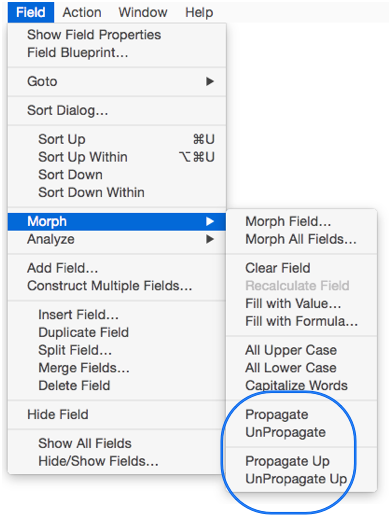
Propagate
The Propagate command fills all the empty cells in the current field, leaving the previously filled cells untouched. The Propagate command propagates filled data cells into the empty data cells (if any) below them.
To illustrate, here is a database where the date was only entered for the first check written each day. For example, there were 13 checks writtin on January 1st, and another ten written on the 5th, and then another 3 written on the 12th. Using the Propagate command Panorama can automatically fill in the dates that were left blank.
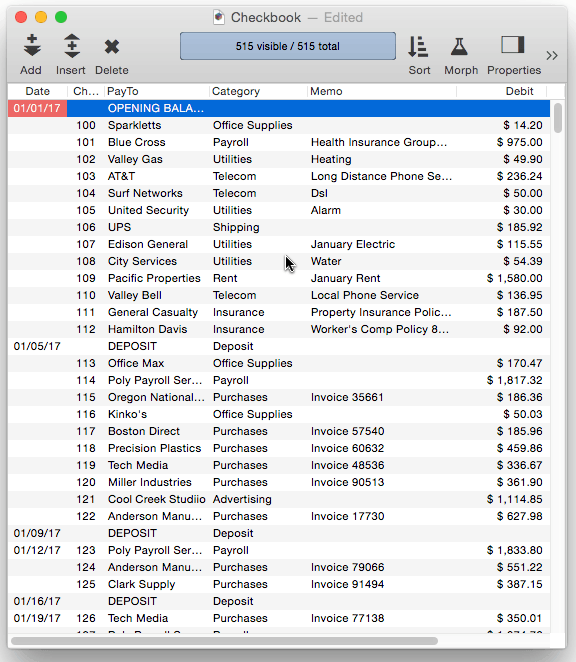
You may find this illustration clearer for understanding how propagation works. The Propagate command starts from the top of the field and works its way down. Whereever it finds an empty spot, it fills it in with the last non-empty cell above.
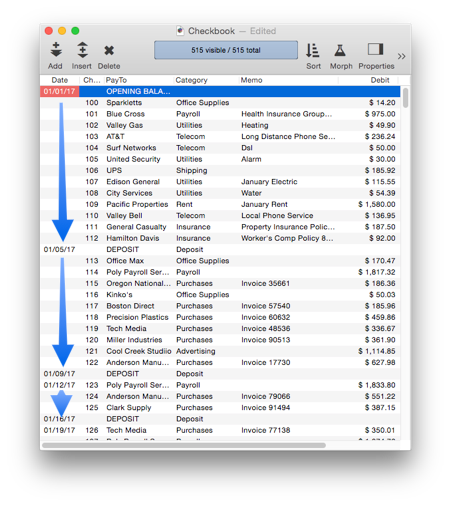
The Propagate Up command performs the same operation upside down, propagating filled data cells into the empty data cells above them.
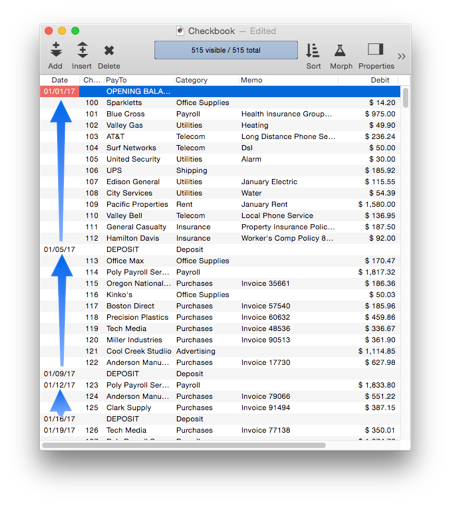
Using Propagate with Summary Records
THe propagate command works slightly differently if the database contains summary records. In that situation, propagation only modifies summary records, data records aren’t touched.
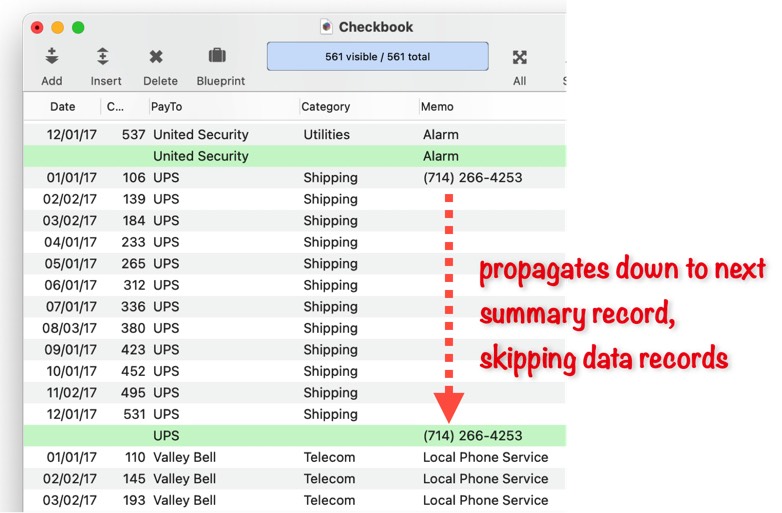
Also, propagation starts over after a set of summary records – a propagated value won’t be carried below summary records.
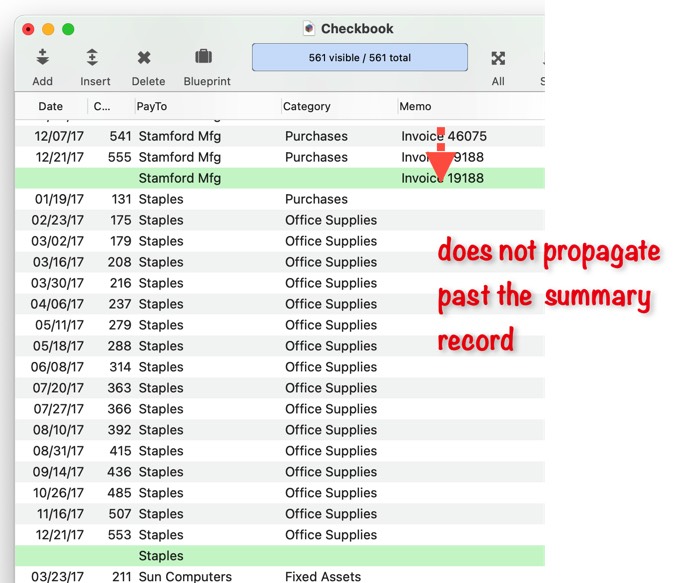
Unpropagate
This command performs the exact inverse of the Propagate command. If the same value appears in two or more consecutive data cells, the Unpropagate command empties the second and subsequent data cells. Here is a database that has been sorted by city. Using the Unpropagate command eliminates all but the first entry for each city.
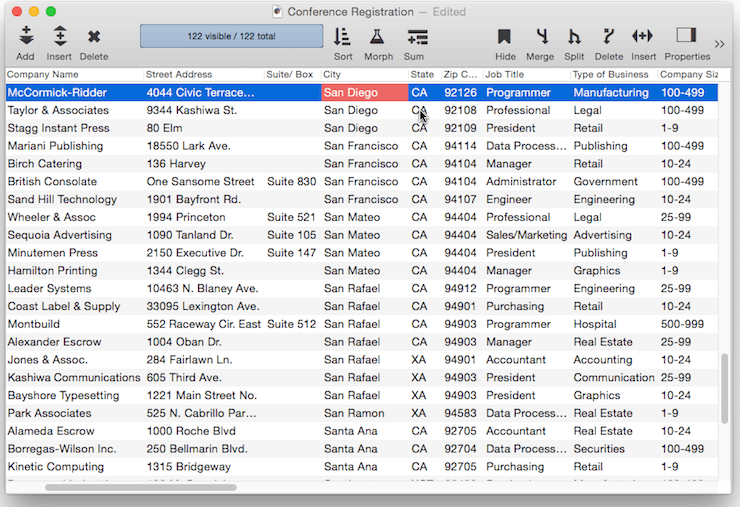
The Unpropagate Up command performs the same operation upside down, leaving the last of several duplicate values while clearing the others.
Using Unpropagate to Eliminate Duplicates
The Unpropagate command can be used to eliminate duplicate values in a database. The first step is to click on the field that contains the potentially duplicate values, for example Name or Company. If you want to eliminate duplicates over multiple fields (for example an entire address) you must create a new field and use the Manipulate Data dialog to combine the data into a single field.
See Also
- Duplicate Removal with Unpropagate -- using the unpropate command to remove duplicate data.
- Morph All Fields Dialog -- morphing the contents of the entire database.
- Morph Date Field Operations -- date morphing operations.
- Morph Field Dialog -- morphing the contents of an entire field.
- Morph Field Favorites -- saving and recalling favorite data morphing operations.
- Morph Numeric Field Operations -- numeric data morphing operations.
- Morph Text Field Operations -- text data morphing operations.
- morphalldialog -- opens the standard MorphAll dialog.
- morphdialog -- opens the standard Morph dialog.
- Shifting Data Left & Right -- sliding data left and right.
- slidedata -- slides the columns at and to the right of the current column.
History
| Version | Status | Notes |
| 10.2 | Updated | If the database contain summary records data records aren't modified, and propagation starts over after a summary record. |
| 10.0 | No Change | Carried over from Panorama 6.0 |